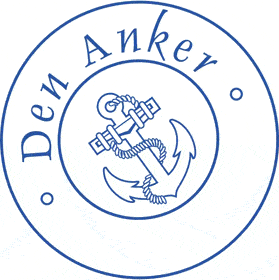Den Anker has been around for more than 17 years making the V&A Waterfront their home. Over the year’s, they have made the best Belgian beers available. Belgians are fiercely loyal to their local brews and take their beers as seriously as the French take their wines. You’ll find beers corked and wired like a bottle of Champagne, and some beers will mature in the bottle up to 6 years. Just like wine, certain beers are paired with certain dishes to create the ideal food matches. Each beer has its own distinctive glass, and colourful cardboard coasters.
Den Anker would love you to enjoy sampling the fabulous beers we have available!

Beer Tasting at Den Anker
- Belgian Beers on Draught
- Artisanal Beers
- Trappist Beer
- Beer Tasting 101
How to taste Beer?
The Five Tasting Steps
- Serve lager at 4-6°C and ales at 10-12°C.1.
- Rinse the glasses in clean, cold water. They could have absorbed 2. odours from the storage cupboard. Glasses washed in chlorinated water will smell of chlorine.
- Fill only one-third of your glass, so that the aroma is captured in 3. the glass.
- Sniff and jot down your initial impression. By the second whiff the 4. aroma will have changed slightly.
- Taste in a series of small sips, and describe what you’ve tasted.5.

Classification
Well-brewed beer will have different characteristics, depending on the type and brewer. In general, there are two beer groups: lagers and ales, identified by the type of yeast used, either low-fermentation (lager) or top-fermentation (ale). For a comparison of types, compare two lagers with two ales. Can you tell them apart? Or establish your favourite brew by tasting four brands from either group.
What to look for in a Lager
A pale colour, low alcohol content (about 5%) and low aroma level. Lager’s low fermentation temperature (around 9°C) results in “neutral” beer aromas, with the yeast settling at the bottom of the fermenting tank after fermentation. Lagers are essentially light-bodied thirst-quenchers made from the best malts and finest hops. Given this purity, any “off” odours will be immediately apparent
What to expect from Ale
Ales vary in colour from pale to dark. The colour is derived from malt on the kiln in the maltery. The higher and earlier the temperature is raised, the darker the malt. When brewing, these darker malts are blended with pale malts, giving a spectrum of colours and tastes that vary from roasted (amber) to burned (Guiness). White beers (which are ales) are entirely different, as they are brewed with some wheat.
Ale has rich, strong aromas and high alcohol levels that can reach 12%. The high alcolhol content contributes to the full-bodied character and the full, round aftertaste of the beer. Fermentation takes place at a much higher temperature than lagers, using another type of yeast, which floats on the surface of the beer at the end of the fermentation process. Brewing is far more complex and every brewer has his own yeast, which is often a closely guarded secret. It is this yeast that imparts a “special” taste to the beer. Sweet beers are usually very strong beers. During fermentation the alcohol content rises so high that it kills the yeast, and some unfermented sweetness remains in the beer.
What is common to both?
A compact and resistant foam. Poor foam resistance is proof of bad brewing or the sign of a dirty glass. Bitterness, a beer should be bitter but never tart. The level of bitterness depends on fashion and taste. Some 50 years ago, beers were more bitter but when women were allowed into pubs after World War II, the bitterness level dropped.
Pin-pointing faults
A beer is faulty when:
- The taste does not live up to the promise of the smell•
- There is a sour taste indicating the the beer has been infected
- with an acetobacter (vinegar) or lactobacter (lactic acid)
- The aromas and tastes are too easily distinguishable. (In beer-• speak, they are “non-married”)
Gezondheid and good luck with your tasting. Have fun!
